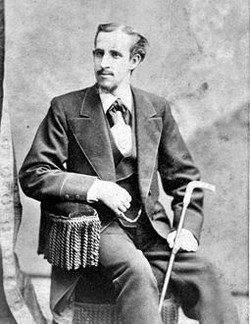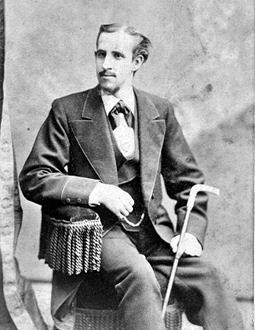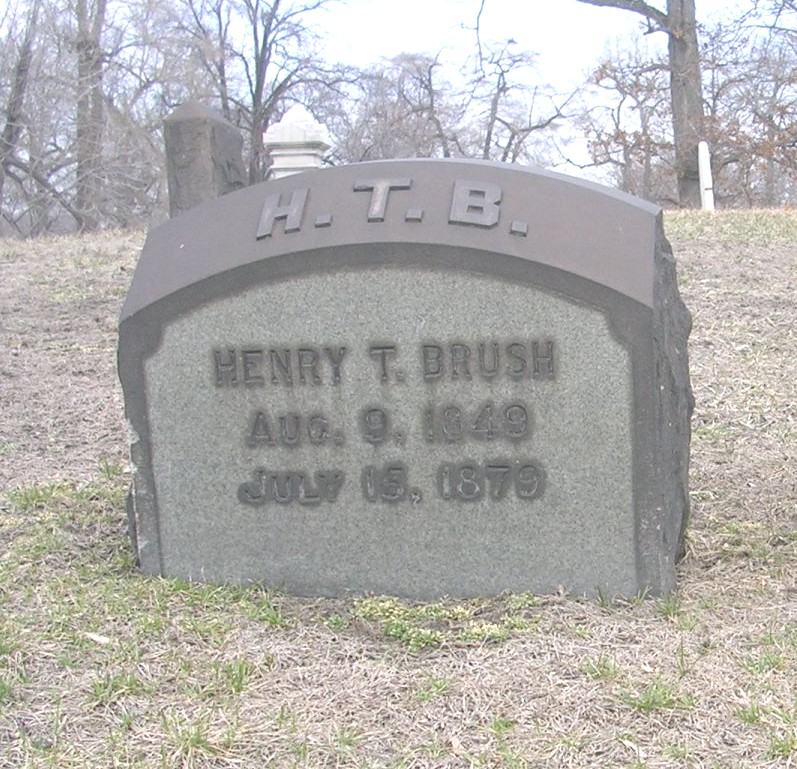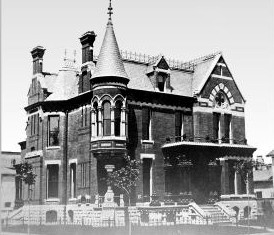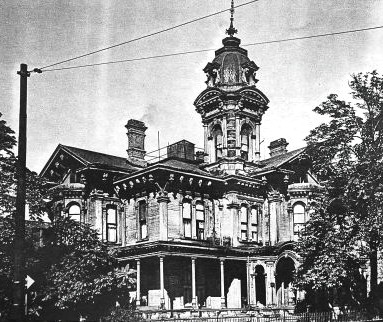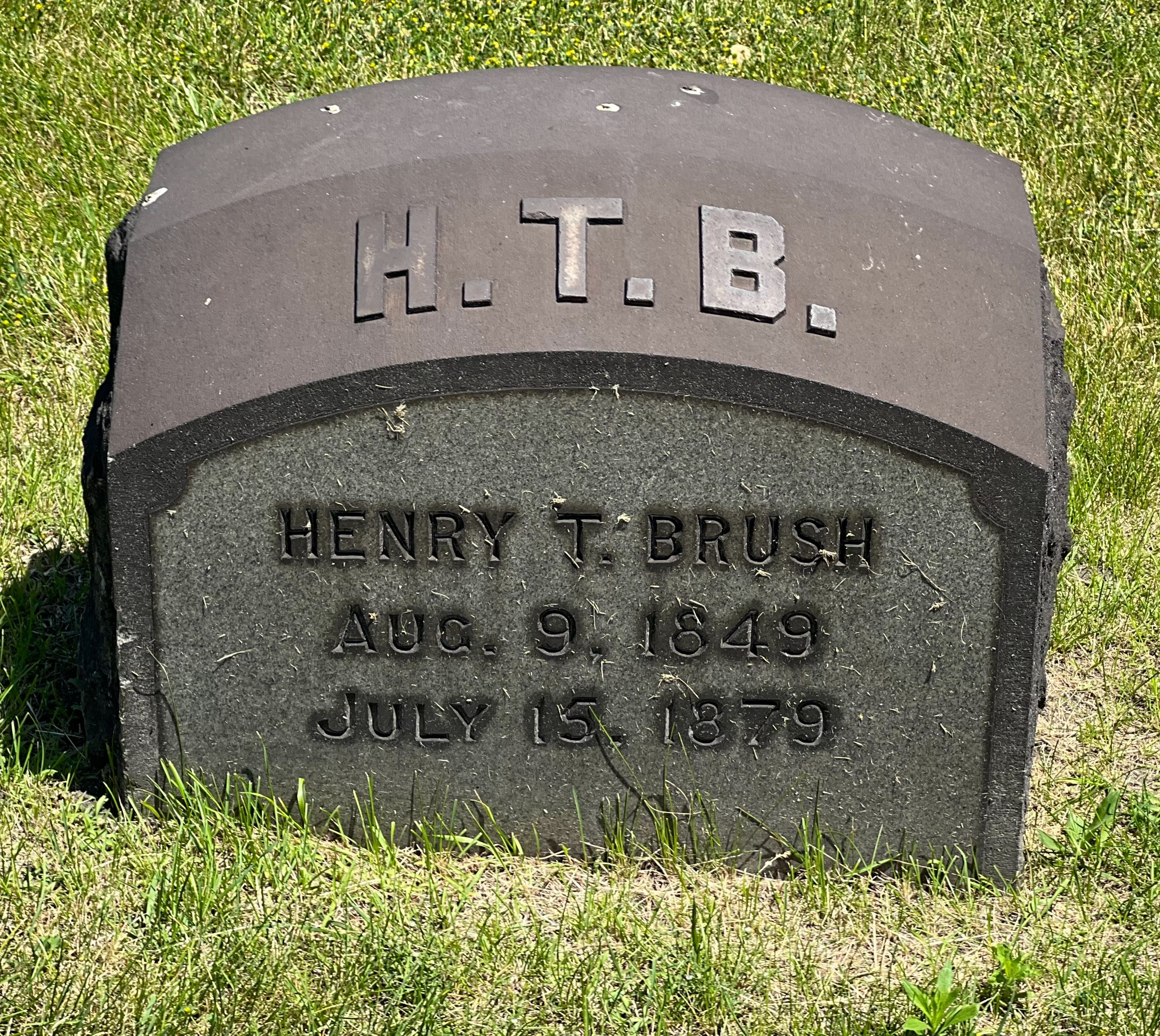Born in Detroit in 1849, to Amanda Hunter and a Canadian man, Brush was exposed to the possibility of architecture by his stepfather, Willian Cicero Grant. Grant was a maker of surveying equipment, barometers and other mathematical related equipment. Young Henry was first employed as a draftsman/architect with J.V. Smith & Company in 1868. Aspiring toward architectural design, he moved to the firm of Porter & Watkins. Brush soon formed his own company with partner Hugh Smith, building the Methodist Church of Canada in Chatham, Ontario in 1873.
In rapid succession, Brush designed and built the Orchard Lake Chapel in Orchard Lake, Michigan (1874) and Central Hall at Hillsdale College, Hillsdale, Michigan (1874), Williamston (Michigan) School (1875), Twenty-First Street (Detroit) Public School (1874), Sherey Zedeck Synagogue (1875), Detroit Woman's Hospital and Foundlings' Home (1876) and Detroit Public Library (1877).
Brush's residential designs include the Caroline Eaton House (1872), the Henry Heames House (1874), the Ransom Gillis House (1876), the George O. Robinson House (1876), the L.L. Farnsworth House (1876), and the Clement Lafferty House (1876). Unfortunately, Brush's Italianate, Second-Empire and Victorian style fell out of favor by World War II and very few of his elaborate structures exist today.
Brush's first wife was Jeanie F. Campbell, who died at age 20 shortly after giving birth to their daughter, Annie Frances in 1874. He married his second wife, Charlotte M. Grosvenor, in March 1876. Their only child, Frederick Brush, was born in 1877. In 1878 he joined in partnership with Scottish-born, European-trained architect/sculptor John Donaldson (1854-1941).
Upon his death at age 29, the local press reported:
"Henry T. BRUSH, a well known and promising young architect, committed suicide Tuesday afternoon by shooting himself in the head with a revolver. He had been in ill health for some months and quite despondent. He leaves a wife and child."
John Donaldson married his late partner's widow, Charlotte, three years later.
Though a young man himself, Henry T. Brush was an advocate and mentor for many up-and-coming architects. George Mason was once apprenticed to him; Mason, in turn, took on a young architect named Albert Kahn.
Born in Detroit in 1849, to Amanda Hunter and a Canadian man, Brush was exposed to the possibility of architecture by his stepfather, Willian Cicero Grant. Grant was a maker of surveying equipment, barometers and other mathematical related equipment. Young Henry was first employed as a draftsman/architect with J.V. Smith & Company in 1868. Aspiring toward architectural design, he moved to the firm of Porter & Watkins. Brush soon formed his own company with partner Hugh Smith, building the Methodist Church of Canada in Chatham, Ontario in 1873.
In rapid succession, Brush designed and built the Orchard Lake Chapel in Orchard Lake, Michigan (1874) and Central Hall at Hillsdale College, Hillsdale, Michigan (1874), Williamston (Michigan) School (1875), Twenty-First Street (Detroit) Public School (1874), Sherey Zedeck Synagogue (1875), Detroit Woman's Hospital and Foundlings' Home (1876) and Detroit Public Library (1877).
Brush's residential designs include the Caroline Eaton House (1872), the Henry Heames House (1874), the Ransom Gillis House (1876), the George O. Robinson House (1876), the L.L. Farnsworth House (1876), and the Clement Lafferty House (1876). Unfortunately, Brush's Italianate, Second-Empire and Victorian style fell out of favor by World War II and very few of his elaborate structures exist today.
Brush's first wife was Jeanie F. Campbell, who died at age 20 shortly after giving birth to their daughter, Annie Frances in 1874. He married his second wife, Charlotte M. Grosvenor, in March 1876. Their only child, Frederick Brush, was born in 1877. In 1878 he joined in partnership with Scottish-born, European-trained architect/sculptor John Donaldson (1854-1941).
Upon his death at age 29, the local press reported:
"Henry T. BRUSH, a well known and promising young architect, committed suicide Tuesday afternoon by shooting himself in the head with a revolver. He had been in ill health for some months and quite despondent. He leaves a wife and child."
John Donaldson married his late partner's widow, Charlotte, three years later.
Though a young man himself, Henry T. Brush was an advocate and mentor for many up-and-coming architects. George Mason was once apprenticed to him; Mason, in turn, took on a young architect named Albert Kahn.
Family Members
Advertisement
Explore more
Sponsored by Ancestry
Advertisement
